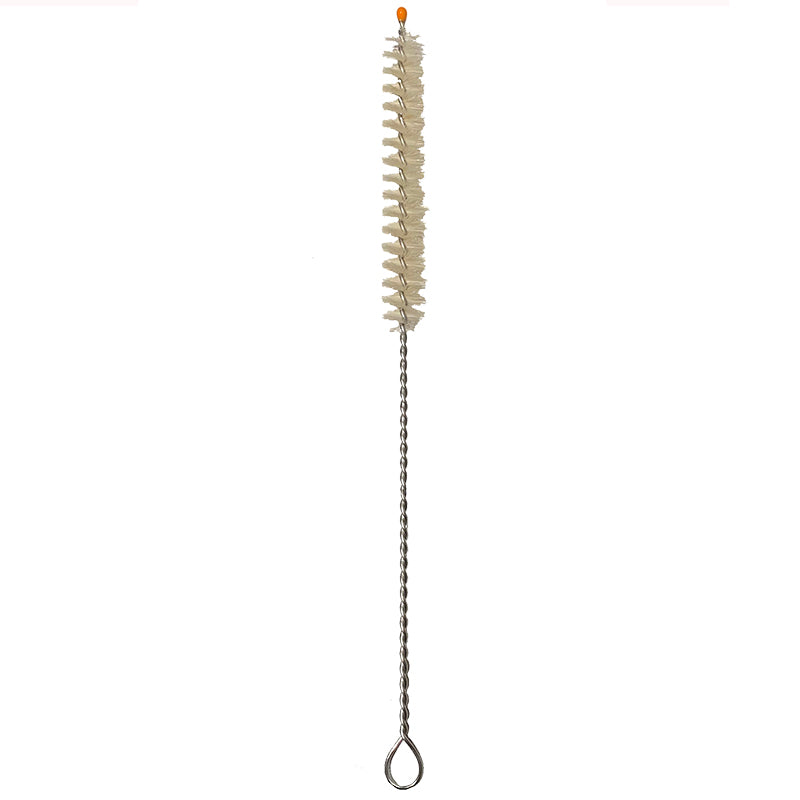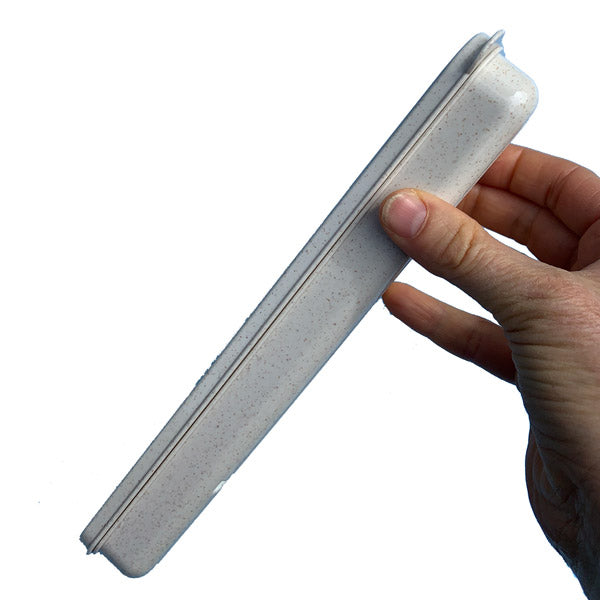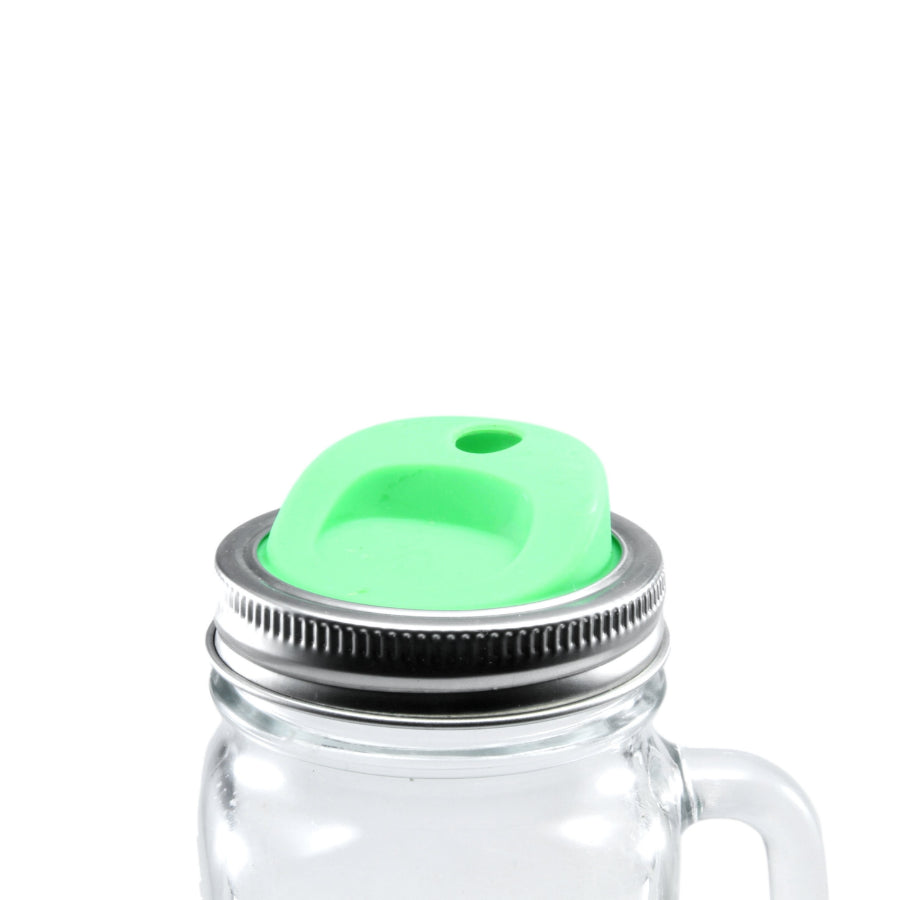The loveable bumble bee and I go all the way back to the beginnings of GlassSipper in 2014. Yet it was only recently that I discovered that the bumble bee and the honey bee are two distinct and different branches of the bee family. Like reusable GlassSipper bees, bumble bees are robust and round, striped in black and yellow, and have near-transparent wings. But unlike GlassSipper bees, bumble bees are also hairy. Honey bees, by contrast, are slender with a pointed abdomen, hairless, primarily black, with translucent wings. Despite the many fine qualities of honey bees, I’m guessing that most of you would agree with me that bumble bees win the award for cuteness hands down.

The GlassSipper bumble beewas one of my first critter designs, and has continued to be one of the top choices of GlassSipper reusable glass drinking straw lovers year in and year out.
In fact, we at GlassSipper love bees so much that the bumble bee came within a bee-hair’s width of being part of the GlassSipper logo. In the end, however, despite our love affair with the bee, we opted for absolute simplicity with our logo. Although the bee didn’t make it onto our logo, thanks to your support we’re thrilled to be steadily filling the world with GlassSipper bee reusable glass drinking straws.
Sadly, in many parts of the world real bee numbers have been dropping precipitously. Nobody really knows with certainty why bee populations are declining. The drop in bee populations likely has a number of causes. Scientific research points to several factors, possibly in combination, including habitat loss, parasites, disease, poor nutrition, and pesticides.
Parasites may well be the primary threat to bees, the most dangerous of which is a mite with the very apt name ofVarroa Destructor. Varroa Destructor mites transmit “Acute Bee Paralysis Virus” and “Deformed Wing Virus” which, not surprisingly given the names, prevent bees from being able to fly. Human agricultural practices such as monoculture farming can cause malnutrition in bees. Monoculture farming is the practise of growing a single crop on gargantuan tracts of land. This limits the bees’ consumption to one type of pollen and thereby prevents bees from obtaining a well-balanced diet. Imagine what would happen to our own health if we were limited to one food item such as corn. Or soy. Or strawberries. I’m guessing the results would not be pretty. Malnourished bees are vulnerable to parasites, disease, and pesticides. Pesticides contribute to the decline of bee populations by interfering with bee communication and navigation, and by compromising their immune systems.
The term “Colony Collapse Disorder” or “CCD” is often mistakenly used as a blanket term to describe declining bee populations. CCD, while dramatic when it does occur, is not a major reason for overall declining numbers, and is less common today than it was a decade ago. CCD is a poorly understood phenomenon in which a hive empties out virtually overnight, leaving behind a healthy - though no doubt lonely - queen, larvae, and full honey stores. There are no dead bees In collapsed hives. In other words, the population seems to just up and leave. And the reason remains a mystery.
While the exact cause of declining bee numbers is still not fully understood, there is little doubt of the potential impact, not just for the honey industry, but for all of us. Fully one third of the human food chain is reliant on bees. Production of fruit, vegetables and nuts is dependent on pollination by bees.
We owe thanks to bees not only for their key role in human food production.Honey itself offers a number of health benefits. Antioxidants in honey have been linked to lowering the risk of strokes, heart attacks, and some forms of cancer. Honey has also been used for millennia for healing burns and wounds, dating all the way back to Ancient Egypt. Research shows honey acts as an anti-inflammatory and antibacterial balm that also nourishes the tissue around a wound.
Even bee stings offer potential health benefits.A toxin in bee venom calledmelittin may prevent HIV by poking holes into the virus' protective envelope. Bee sting venom can also reduce pain caused by rheumatoid arthritis and increase levels of an anti-inflammatory hormone calledglucocorticoid. Finally, bees use a resin from poplar and evergreen trees calledpropolis to reinforce their hives, which has also been shown to relieve cold sores, canker sores, herpes, sore throats, cavities, and eczema.
So what can we do to help bees who help us in so many important ways? First and foremost, always keep in mind that bees love and need flowers. Lots and lots of them.
We can use our gardens, planter boxes, and window sills to plant a wide variety of flowering trees and plants. We can extend the flowering season with plants that flower at different times of year. Here in Vancouver our crocuses often bloom in January and February, so with a little effort we should be able to keep our bees happy nearly year round. Lavender, borage and marjoram are especially effective in attracting bees. Bees also love primrose, buddleia, and marigolds. And we can share with family and friends all that we’ve learned about how vital bees are to our lives, and we can encourage them to go wild planting flowering trees and plants as well.
As for me, leading up to World Honey Bee Day on August 21, 2021, I intend to do my part to up the world bee population, and to honour the humble and hard-working bee, by getting down on my bee’s-knees and doing some serious flower planting. Then, I plan to make a bee-line to my torch and get busy-as-a-bee adding to the world’s population of GlassSipper reusable glass bee drinking straws. And when I’m done, I’m going to make my favourite fruit smoothie, plop a GlassSipper bee straw in my glass and relax out on my bee-utiful back balcony. Who knows, maybe a few real live bees will bee out there celebrating with me.







